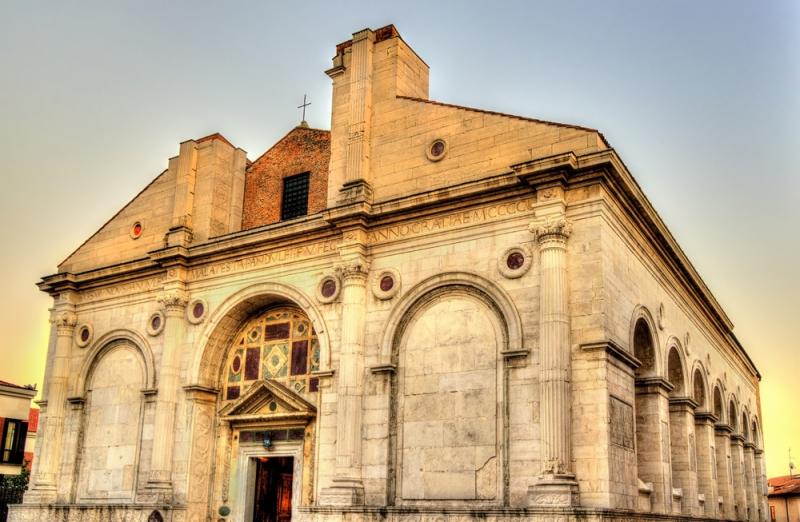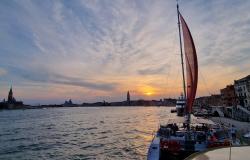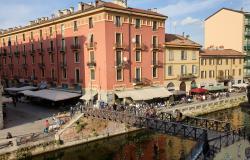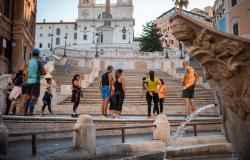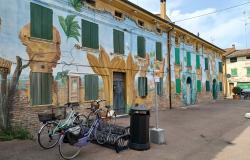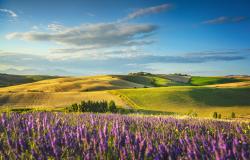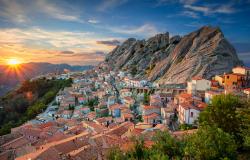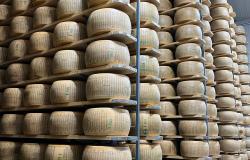Kneeling before St. Sigismund, Sigismondo Pandolfo Malatesta looks proud and dignified, reflecting his fame as a skilled and daring condottiero: thus Piero della Francesca portrayed him in the fresco he was asked to produce for the Tempio Malatestiano in Rimini, a landmark monument of this seaside city in Emilia-Romagna and the symbol of the power of the Malatesta, the dynasty that ruled over Rimini and parts of Romagna from 1295 until 1500.
As one of the most famous seaside resorts in Europe, Rimini is mostly associated with beaches and nightlife; few would think of it as a small capital of Renaissance Humanism, a status it achieved thanks to Sigismondo Pandolfo, not only a skilled military leader fighting against the papacy and his rival Federico da Montefeltro over territorial claims, but also a poet and a patron of the arts.
After Sigismund of Luxembourg, the Holy Roman Emperor between 1433 and 1437, nominated Sigismondo Pandolfo ‘cavaliere’, thus validating his control over Rimini, Sigismondo proceeded to make Rimini a center of Humanist culture and art, following the example of neighboring Urbino. He summoned to his courts artists, writers and architects such as Leon Battista Alberti, who was asked to transform the Church of San Francesco, where many of Sigismondo’s ancestors were buried, in a magnificent mausoleum that was meant to celebrate his lineage.

While incomplete, the monumental Tempio Malatestiano (today the city’s cathedral) is considered one of the top monuments built in 15th century Italy. Alberti had the idea to encase the previous church in a marble shell, inspired by Classical forms, and especially Roman architecture: the façade and the side walls respectively echo the Arch of Augustus and the Bridge of Tiberius, Rimini’s most important ancient monuments, legacy of the town’s Roman origins (Rimini was founded by the Romans in 268 BC, as a strategic outpost between the north and south of the peninsula).
Inside, the Tempio Malatestiano is elegant and bright, the chapels decorated with fine sculptures by Florentine artist Agostino di Duccio, with many allegories and references to mythology, Neo-platonic philosophy and astrology. Among the sculptures, stands out the figure of Sigismondo Malatesta, celebrated in portraits and his numerous monograms.

To the right of the main door is Sigismondo Pandolfo's sepulchre. The next chapel is dedicated to St. Sigismund, patron of soldiers, with the aforementioned fresco by Piero della Francesca (1451). The next chapel, Cappella degli Angeli, houses the tomb of Isotta degli Atti, Sigismondo’s lover and later his third wife.
Because of the many elements referring to the Malatesta's history, to Sigismondo Pandolfo himself, and to his lover Isotta, the church was considered by some contemporaries an exaltation of Paganism. Pope Pius II, Sigismondo's fiercest enemy, described it as “full of pagan gods and profane things.”
After Sigismondo Pandolfo was excommunicated by the Pope in 1462, work on the Tempio Malatestiano ceased and the building remained incomplete.
The other main monument dating from the Renaissance in Rimini is Castel Sismondo, or Rocca Malatestiana, a fortress-residence commissioned by Sigismondo Pandolfo with the double function of defensive structure and celebratory monument. Even Brunelleschi worked on its construction. Only the structure’s central nucleus remains today, but the original building was imposing, with its brick towers, scarp walls, and large moat. To highlight his supremacy over the city, Sigismondo Malatesta demolished the buildings between the castle and the nearby municipal square, now Piazza Cavour, which today is the town’s main square. Sigismondo Pandolfo died here in 1468.

In the 16th century, the 'grand square', located on the site of the old Roman forum, where markets and tournaments were held, was redesigned, with the addition of a small temple dedicated to Saint Anthony of Padua (1518) and a clock tower. It is now known as Piazza Tre Martiri. This is supposedly where Julius Caesar gave the famous speech to his soldiers after having crossed the Rubicon in 49 B.C., when he said, “alea jacta est” (“the die is cast”).
